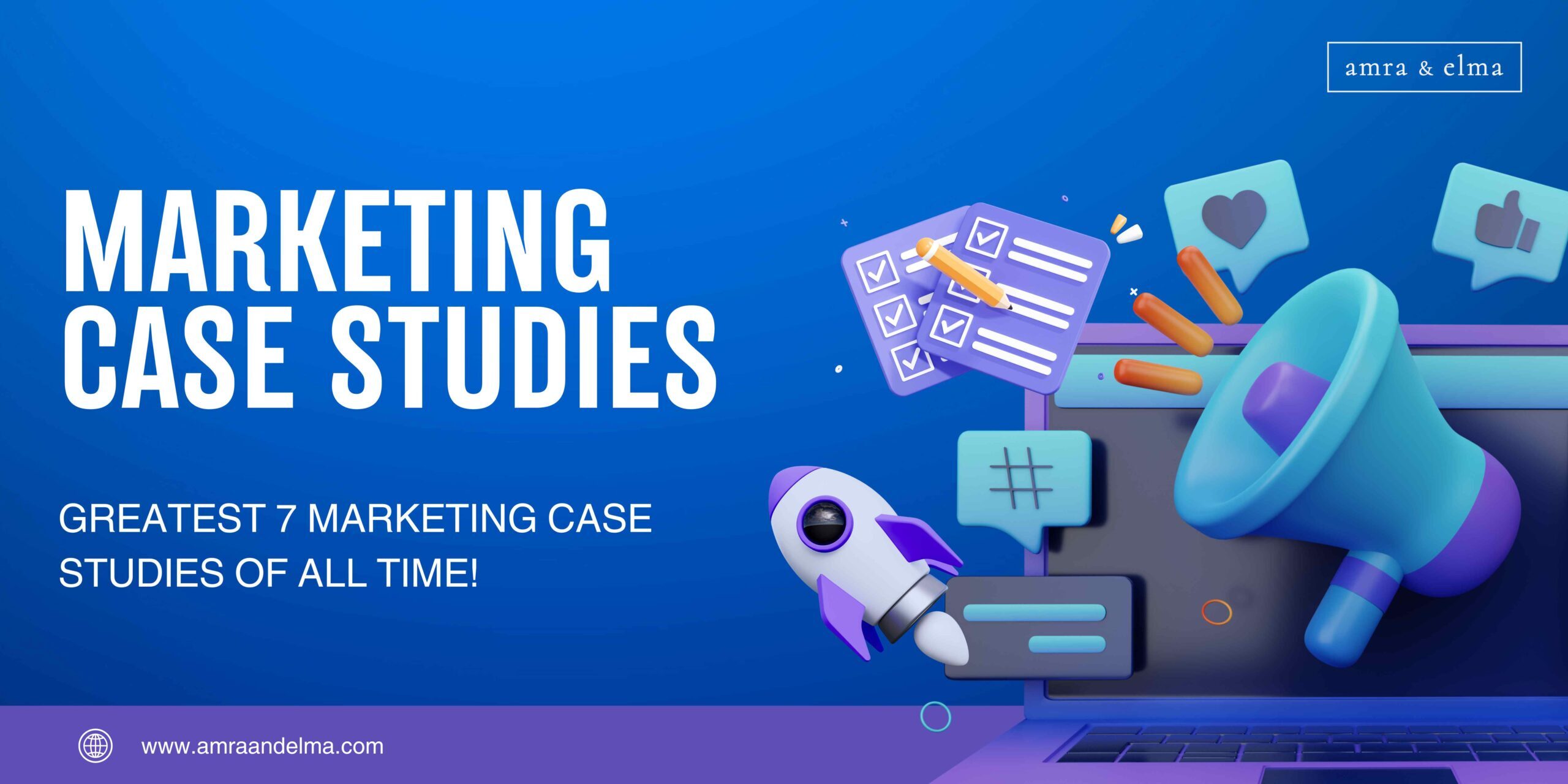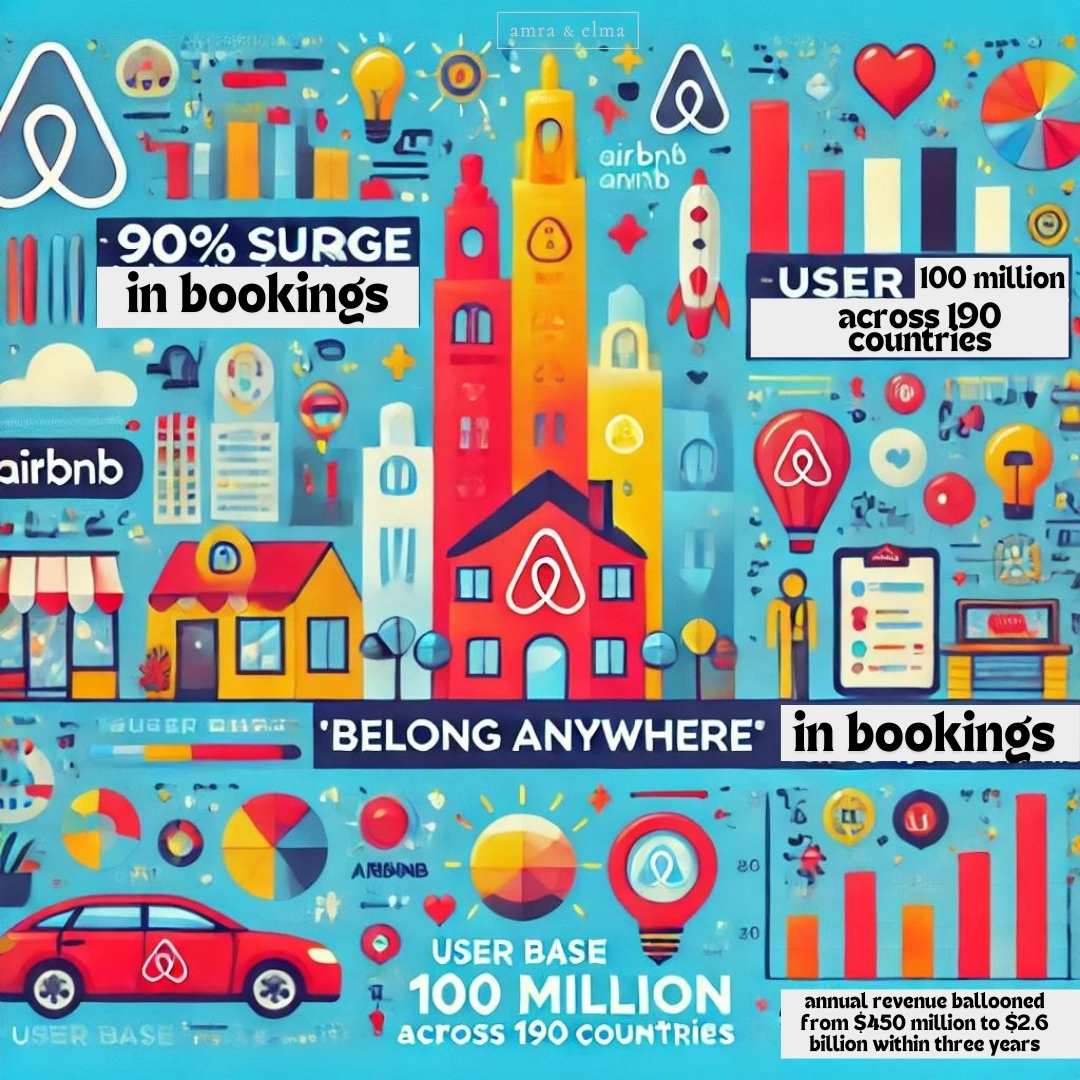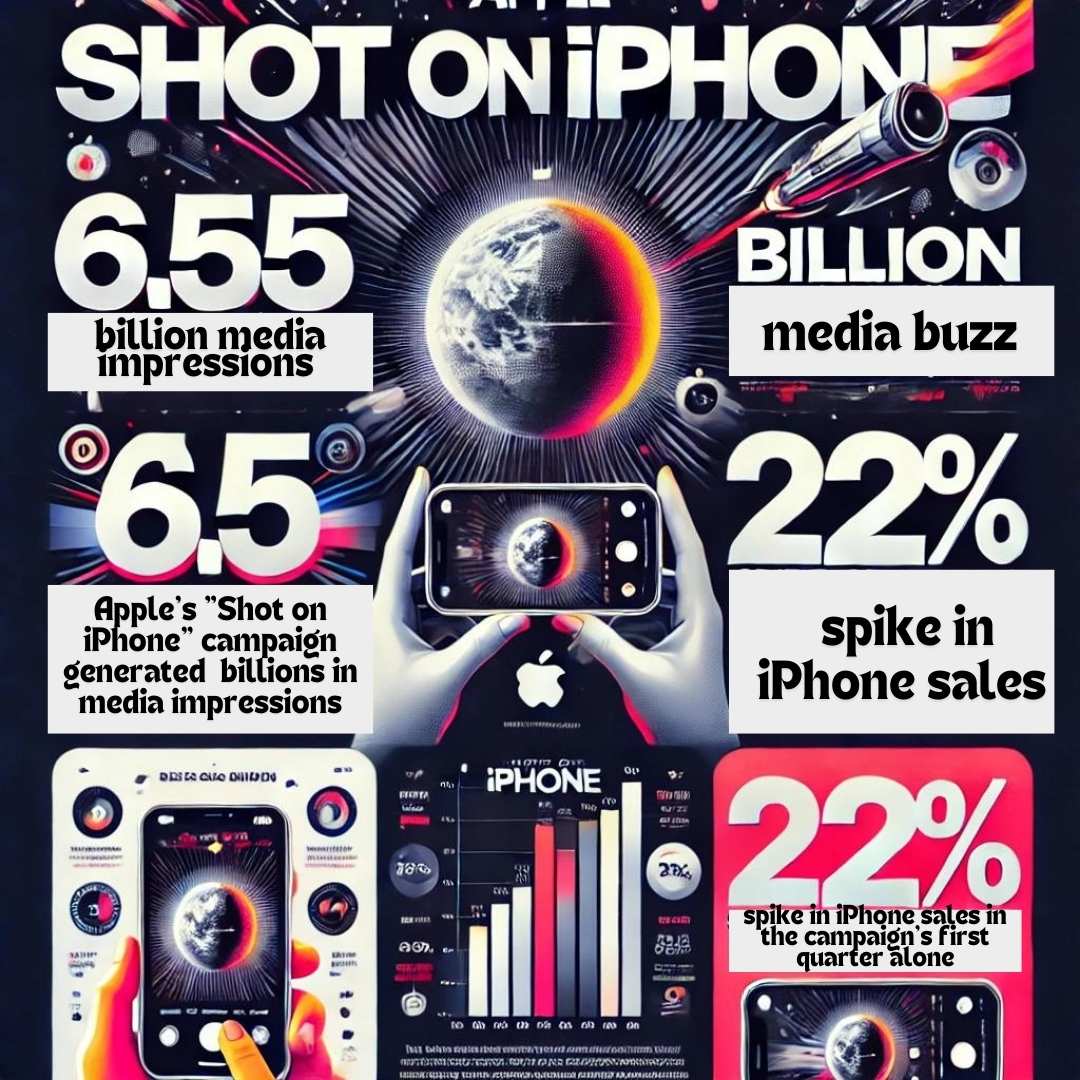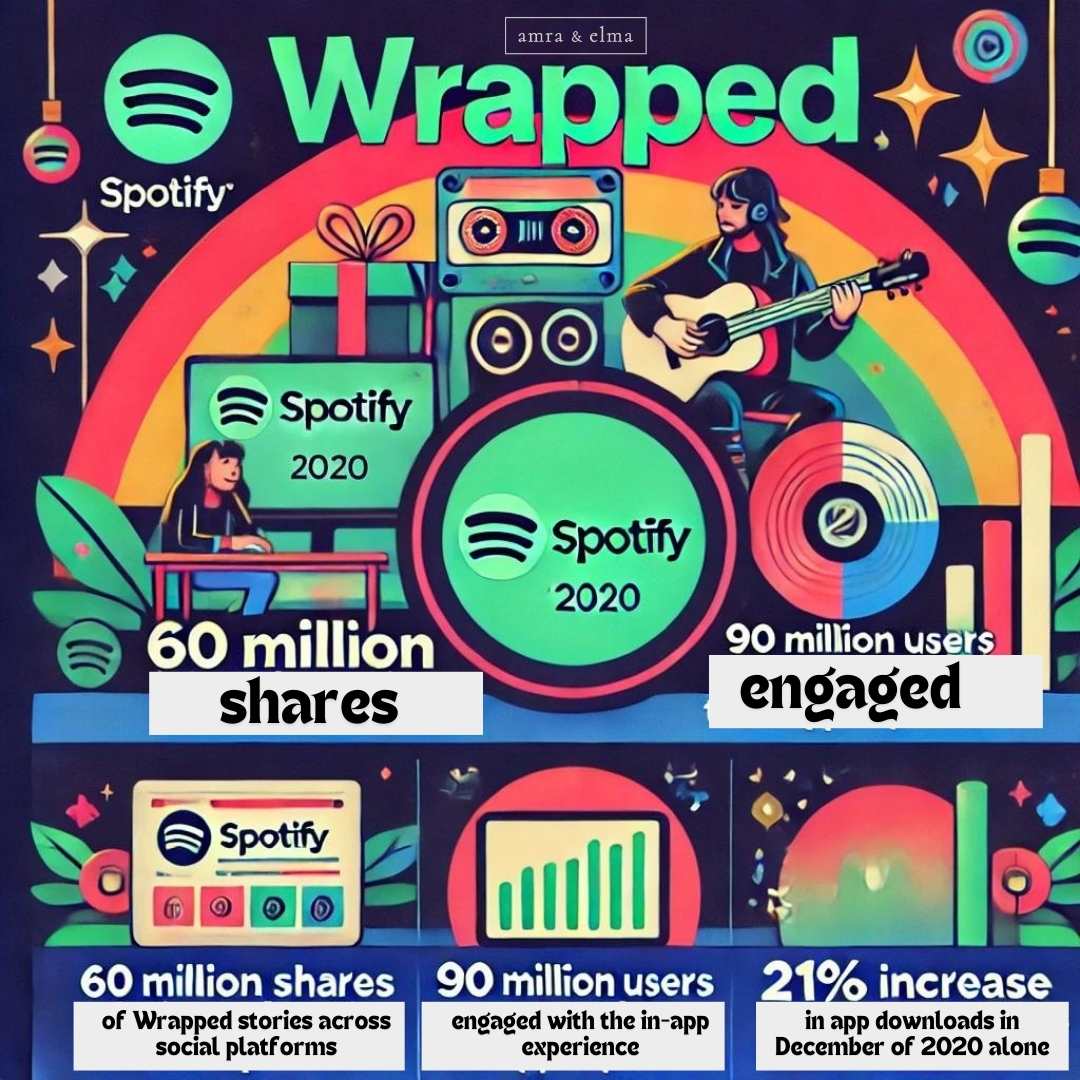
14 Oct 7 TOP MARKETING CASE STUDIES
In today’s world, every brand is fighting to rise above the noise. Whether you’re launching a new product or trying to revive an existing one, the goal is the same: prove that what you’re doing works and get the world to notice. But how do you do that? That’s where a great marketing case study comes into play.
Think about the brands that dominate the conversation—Nike, Airbnb, Coca-Cola. Their success isn’t just about having a great product; it’s about showing how they solved problems and delivered extraordinary results. A marketing case study is much more than just a success story. It’s an insider’s guide into how top brands tackle challenges, why their strategies work, and—here’s the best part—how those strategies can be recreated.
This is where the power of storytelling comes in. You’re not just showing what your brand did; you’re walking people through a journey that includes real numbers, strategies, and challenges. The magic of a marketing case study is in its ability to both inspire and inform. It’s about painting a picture that grabs your attention from the very first line and keeps you hooked until you’re convinced that the results weren’t just possible—they were inevitable.
So, what does it take to create a compelling marketing case study that makes your brand look irresistible? How do you make sure it’s more than just another set of boring metrics or a forgettable list of bullet points? And more importantly, how can you take what worked for brands like Airbnb, Nike, and Old Spice and make it work for you?
We’re about to dive into what makes a marketing case study truly great and explore seven standout examples from some of the biggest names in the business. These aren’t just interesting stories; they’re real-life blueprints that turned brands into household names. Ready? Let’s dig in.
GREATEST 7 MARKETING CASE STUDIES
1. Airbnb – “Belong Anywhere” Campaign
2. Nike – “Just Do It” Campaign
3. Coca-Cola – “Share a Coke” Campaign
4. Apple – “Shot on iPhone” Campaign
5. Old Spice – “The Man Your Man Could Smell Like” Campaign
6. Dollar Shave Club – Viral Video Campaign
7. Spotify – “Wrapped” Campaign
What is a Marketing Case Study and What Makes a Great One?
Now, let’s take a step back and ask the big question: what exactly is a marketing case study, and why should you care?
At its core, a marketing case study is like a backstage pass to the success of a campaign. It’s a deep dive into how a particular strategy was executed and the results that followed. Think of it as a success recipe—it lays out the problem, the creative solution, the tactics that were used, and finally, the results. But here’s the thing—it’s not just a highlight reel of wins; it’s a roadmap that shows other brands (like yours) how they can follow in the same footsteps.
A truly great case study is like a masterclass in marketing. It doesn’t just throw out random stats or generic strategies. Instead, it takes a real challenge—something relatable that any brand might face—tackles it with a unique and effective approach, and delivers results that make you sit up and pay attention.
But let’s break it down a bit further. What exactly makes a marketing case study stand out? Why do some examples leave you inspired, while others leave you yawning? Here are the key elements that turn a good case study into an unforgettable one:
- Relatable Challenges
A great case study starts with a problem that brands can relate to. Whether it’s stagnant growth, low brand awareness, or struggling to connect with a new demographic, the best case studies speak to challenges that many companies face. The more relatable the challenge, the more your audience leans in to see how you tackled it.
- A Bold, Unique Strategy
Cookie-cutter strategies don’t turn heads. According to SpeedyPaper, “what sets great case studies apart is how the brand approached the challenge differently.” Did they leverage an underused marketing channel? Did they use data in a creative way? Think of Old Spice’s wildly humorous “The Man Your Man Could Smell Like” campaign. Their boldness and humor weren’t just creative—they were strategic, and they worked. Brands that take risks often end up rewriting the rules.
- Clear Objectives and KPIs
This is where the case study separates itself from just a “fun campaign.” What were the key performance indicators (KPIs) going into the campaign? Whether it’s an increase in website traffic, social media engagement, or direct sales, the objectives need to be clear from the start. For example, Coca-Cola’s “Share a Coke” campaign had one clear objective: to increase brand engagement, especially among younger consumers. Spoiler alert: it did just that.
- Execution with Precision
It’s one thing to have a great idea. It’s another to execute it flawlessly. The most effective case studies show how every aspect of the campaign was carried out with meticulous detail, from creative assets to ad placements to social media strategy. Precision matters. Take Apple’s “Shot on iPhone” campaign. The execution was simple but precise—real user-generated content that highlighted the product’s strength without relying on traditional advertising.
- Tangible Results
At the end of the day, results speak louder than any strategy or creative campaign. But here’s the thing: not just any results. We’re talking about clear, specific metrics—an increase in sales, higher engagement rates, improved brand visibility, or better market share. For instance, Nike’s “Just Do It” campaign wasn’t just memorable—it directly contributed to a $9.2 billion increase in sales within a decade. Tangible results are the exclamation point at the end of a great case study.
- A Playbook for Replication
The best case studies aren’t just celebrations of what a brand did—they offer a clear path for how you can apply the same principles. It’s like a marketing cheat code. According to Writepaperforme, “when a brand can look at a case study and think, “I can do that too,” that’s when the magic happens.”
TOP 6 Marketing Case Studies
Let’s move beyond the theory and into the real world. What do the most successful marketing case studies look like? Here are six examples that not only delivered extraordinary results but also offer valuable lessons for any brand looking to achieve the same.
Marketing Case Study #1. Airbnb – “Belong Anywhere” Campaign
How did Airbnb transform from a scrappy startup into a global giant? They leaned into the power of community and used it as their secret weapon.
The Challenge:
In 2014, Airbnb was facing a tough battle. Sure, they had a unique business model, but they were up against a traditional hotel industry that had billions to spend on marketing. How could they differentiate themselves and make potential customers see them as a legitimate option?
The Strategy:
Airbnb knew that in order to scale, they needed more than just an accommodation solution—they needed to stand out as the brand that made people feel welcome wherever they were. By emphasizing “belonging” over “travel,” Airbnb humanized their service. They created a sense of community that was more powerful than traditional hotels, where travelers could feel like they were home, even in a foreign place.
A key component of this campaign’s success was its emphasis on storytelling. Airbnb didn’t just talk about its service in terms of functionality; they used personal narratives and visuals from real users, blending user-generated content (UGC) with highly polished marketing materials. Every listing became a story about the local experience and the home-like feel of staying in someone else’s space.
Additionally, Airbnb rolled out the campaign with localized elements. Their messaging was tailored for different markets around the globe, making travelers in Paris, Tokyo, and New York feel like the campaign spoke directly to them. This hyper-localization was essential in showing that Airbnb was not just a global brand but also an intimate one.
The Results:
After the campaign, Airbnb saw a 90% surge in bookings globally in just a year. Not only did their user base skyrocket to 100 million people across 190 countries, but their annual revenue ballooned from $450 million to $2.6 billion within three years. Moreover, Airbnb became synonymous with a different kind of travel—one that valued immersion, culture, and local experiences over impersonal hotel stays. As of today, the Airbnb model has become a dominant force, with travelers increasingly seeking alternatives to traditional accommodations.

Marketing Case Study #2. Nike – “Just Do It” Campaign
There’s a reason Nike’s “Just Do It” campaign is legendary in the world of marketing. It didn’t just sell sneakers—it sold a movement.
The Challenge:
In the late 1980s, Nike was big, but not the giant it is today. They were well-known in the sports world, but their appeal didn’t stretch far beyond that. They needed to break into mainstream culture and reach a wider audience—beyond hardcore athletes.
The Strategy:
What makes Nike’s “Just Do It” campaign so powerful is that it didn’t just market products; it created a movement. The genius of the campaign lay in its universality—”Just Do It” could apply to anyone, whether you were an elite athlete or someone getting off the couch for your first run. The slogan empowered people to push through their limits, whether those limits were physical, emotional, or mental. Nike wasn’t selling shoes; they were selling self-belief.
Nike’s campaign strategy was layered. First, they showcased elite athletes like Michael Jordan and Serena Williams to align the brand with excellence and performance. These athletes were living embodiments of the “Just Do It” ethos. However, Nike also made space for everyday people, showing that the philosophy wasn’t just for the sports elite but for everyone with goals and aspirations. This balance between aspirational and relatable made the campaign accessible while still maintaining an edge.
Nike also brilliantly leveraged cross-media storytelling. The campaign appeared across print ads, TV commercials, billboards, and eventually digital platforms. Each piece of content, while unique, tied back to the same central message: to get up and make things happen, no matter the obstacles.
The Results:
The numbers from Nike’s “Just Do It” campaign are staggering. Within a decade, Nike’s sales soared from $877 million to $9.2 billion. Their market share in North America exploded from 18% to 43%, all while turning their slogan into one of the most recognized taglines in the world. Nike’s market value today is over $200 billion, and much of their global success can be attributed to the ongoing legacy of the “Just Do It” campaign, which continues to resonate with consumers worldwide.
Marketing Case Study #3. Coca-Cola – “Share a Coke” Campaign
Personalization is the name of the game. Coca-Cola’s “Share a Coke” campaign was a bold reminder of how connecting with consumers on a personal level can drive serious engagement.
The Challenge:
By 2011, Coca-Cola was facing a challenge familiar to many heritage brands: they needed to stay relevant with a younger generation. The brand was iconic, yes, but they were losing traction with millennials, who increasingly favored more personalized, health-conscious options. Coca-Cola needed to re-ignite its connection with this audience while still maintaining its core appeal.
The Strategy:
The simplicity of Coca-Cola’s “Share a Coke” campaign is what made it so brilliant. Coca-Cola replaced their iconic logo with personalized names on their bottles—a bold move for a brand so closely tied to its logo. But this wasn’t just a packaging tweak; it was an entire personalization strategy aimed at re-engaging consumers.
Coca-Cola smartly rolled out this campaign with localized execution, ensuring that the 150 most popular names in each country were represented. In addition to increasing sales in-store, the campaign heavily leaned into social media engagement, encouraging people to find bottles with their names and share them using the hashtag #ShareaCoke. It turned the once generic Coca-Cola bottle into something personal and shareable.
Furthermore, the campaign introduced customization stations at events, where customers could create personalized Coke bottles with any name of their choosing. This offered an extra layer of consumer interaction, driving engagement beyond just buying a Coke at the store.
The Results:
The results were outstanding. Coca-Cola reversed a decade-long decline in U.S. sales with a 2% bump, and in Australia, consumption among young adults increased by 7%. The campaign sparked an 870% increase in social media mentions, and the hashtag #ShareaCoke was associated with over 500,000 user-generated photos. This was a massive engagement win for Coca-Cola, proving that personalized marketing can be a game-changer when executed well.
Marketing Case Study #4. Apple – “Shot on iPhone” Campaign
In a world saturated with glossy, overproduced marketing, Apple’s “Shot on iPhone” campaign showed the power of user-generated content. Instead of flashy, professional ads, Apple let their users tell the story—and the result was marketing magic.
The Challenge:
Apple, the juggernaut of consumer electronics, wanted to showcase the camera quality of the iPhone in a fresh, creative way. But instead of a typical commercial that highlighted specs and features, they decided to take a different route. How could they prove that the iPhone camera was not only good but world-class? Enter the “Shot on iPhone” campaign.
The Strategy:
The “Shot on iPhone” campaign was revolutionary not because of flashy technology but because it placed the power of creativity into the hands of the consumer. Apple focused on user-generated content (UGC), encouraging users to submit their best photos taken with the iPhone. The most striking images were then featured across billboards, social media, and other advertisements globally. This approach turned everyday consumers into brand advocates.
One of the campaign’s most notable strategies was its use of authenticity. While most smartphone ads were packed with technical specs, Apple decided to let the images speak for themselves. The focus wasn’t on megapixels or filters but on the creative potential the iPhone camera unlocked for users. The message was simple: “If these images were shot on an iPhone, imagine what you could create.”
Apple further emphasized social proof by showcasing the work of amateur and professional photographers alike, sending a powerful message that no matter who you were, the iPhone could help you create stunning, professional-quality work.
The Results:
Apple’s “Shot on iPhone” campaign generated 6.5 billion media impressions and led to a 22% spike in iPhone sales in the campaign’s first quarter alone. The campaign also reinforced Apple’s branding as a creative and innovative leader in tech, without relying on typical product-pushing strategies. More importantly, the campaign cultivated a loyal community of users who saw the iPhone as more than just a phone—it became a creative tool and status symbol.

Marketing Case Study #6. Dollar Shave Club – Viral Video Campaign
With a budget of just $4,500, Dollar Shave Club pulled off one of the most legendary viral marketing campaigns of all time. The key? Humor, simplicity, and a message that resonated with millions of frustrated consumers.
The Challenge:
Dollar Shave Club was a brand-new company entering a highly competitive market. The razor industry was dominated by big names like Gillette, and they needed to break through the noise and convince customers that their subscription service was not only convenient but superior.
The Strategy:
Dollar Shave Club’s viral video campaign is a case study in low-budget, high-impact marketing. With a production budget of just $4,500, the video was funny, irreverent, and delivered a straightforward message: “Our blades are f***ing great.” This approach cut through the noise of razor giants like Gillette, which spent millions on sleek, high-end ads. Dollar Shave Club went the opposite direction, embracing humor and simplicity to appeal to frustrated consumers tired of overpriced razors.
The video, starring founder Michael Dubin, was filled with one-liners and quirky visuals, but its brilliance lay in its authenticity and shareability. It wasn’t a traditional ad—it felt like a fun piece of content that people wanted to share with their friends. And in the age of social media, this approach hit the sweet spot, leading to organic viral growth.
But it didn’t end there. Dollar Shave Club strategically followed up on the viral success with targeted online ads, referral incentives, and a subscription model that offered convenience and affordability.
The Results:
The video went viral overnight, bringing in 12,000 new orders within just 48 hours of its release. By 2015, Dollar Shave Club had grown into a business with over $200 million in annual revenue, and in 2016, the company was acquired by Unilever for $1 billion. What started as a simple viral video became a catalyst for an entire industry shift, proving that even small brands with limited budgets can compete—and win—against industry giants.
Marketing Case Study #7. Spotify – “Wrapped” Campaign
Spotify’s “Wrapped” campaign is a masterclass in how to use personalization and data to create an emotional connection with users. The annual year-end campaign transforms listener data into a shareable, personalized story that both celebrates individual music tastes and taps into the larger cultural moment.
The Challenge:
As the competition among music streaming services grew fiercer, Spotify needed to maintain a competitive edge by deepening its engagement with existing users and enticing new ones to join. By 2016, the market was getting crowded with players like Apple Music, Amazon Music, and others making headway. Spotify had already built a massive user base but wanted to make sure it kept growing and stayed top of mind for consumers.
The Strategy:
The genius behind Spotify’s “Wrapped” campaign lies in how it takes something as mundane as data—your listening habits—and turns it into a deeply personal, shareable story. Each December, Spotify users receive a personalized “Wrapped” experience, which details their top songs, favorite genres, and the total amount of time they spent listening to music throughout the year.
But what really sets this campaign apart is its emotional resonance. People love seeing themselves reflected in the music they’ve consumed, and Spotify takes advantage of that by making the data fun and interactive. Users can share their “Wrapped” results on social media with pre-made, attractive graphics that highlight their unique listening stats. It’s more than just an analytics report; it’s a personalized celebration of their year in music.
Spotify also extended the campaign beyond individual users by adding personalized results for artists, showing them how their music performed across the platform. This not only engages users but also strengthens relationships with creators, who then share their own Spotify Wrapped stats with their audiences.
Additionally, Spotify uses the data from all its users to create global trends, sharing fun and quirky insights about how certain songs, artists, and genres trended worldwide. This offers a mix of personalization and community, making users feel part of a larger global conversation while still celebrating their own individual tastes.
The Results:
Spotify’s Wrapped campaign has become an annual cultural event. The 2020 edition saw over 60 million shares of Wrapped stories across social platforms, and over 90 million users engaged with the in-app experience. This personalized approach led to a 21% increase in app downloads in December of 2020 alone.
But the campaign’s impact goes far beyond just a spike in engagement or app usage. Wrapped has become a powerful retention tool for Spotify, helping users stay connected to the platform year after year. By focusing on personalization and encouraging users to share their Wrapped results on social media, Spotify has found a way to consistently stay top of mind during the holiday season, making it not just a music platform but a brand that users actively engage with and promote.
In 2021, Spotify Wrapped continued to dominate social media, with millions of users eagerly sharing their personalized year in music. Wrapped also drives significant PR for the brand, with major news outlets and influencers covering the event, further embedding it in popular culture. The campaign has helped solidify Spotify’s position as the dominant music streaming platform with 365 million active users as of mid-2021.



Marketing Case Study #5. Old Spice – “The Man Your Man Could Smell Like” Campaign
If there’s one campaign that flipped a brand’s image on its head, it’s Old Spice’s “The Man Your Man Could Smell Like.” What started as a quirky, humorous ad quickly became a viral sensation that transformed Old Spice from a brand your granddad used to wear into a product coveted by a whole new generation.
The Challenge:
Old Spice was facing an image problem. By the mid-2000s, the brand was seen as outdated, a relic of another era. They needed to modernize their image and appeal to a younger audience, particularly young men—and, crucially, women, who tend to buy toiletries for the men in their lives.
The Strategy:
Old Spice’s rebranding with “The Man Your Man Could Smell Like” campaign is a prime example of how humor and personality can breathe life into a legacy brand. The genius of this campaign wasn’t just in the quirky, over-the-top humor but in how it spoke directly to the brand’s key audiences—both men and women.
Old Spice had been pigeonholed as an “old man” brand, so they needed to modernize their image while still keeping their original customer base intact. The ad was strategically designed to appeal to women, who often buy toiletries for the men in their lives, while also being hilarious enough to engage men.
The campaign included a mix of traditional TV spots and digital-first engagement, especially on social media. The real breakthrough, though, came when Old Spice extended the campaign with personalized video responses to individual users on social media. This not only drove engagement but also made the brand feel interactive and personal, a rarity in mass-market campaigns.
The Results:
Old Spice’s body wash sales grew by 125% within six months of the campaign’s launch. The video quickly went viral, racking up over 40 million views on YouTube in just a few weeks. The campaign also led to a 2,700% increase in Twitter followers and an 800% boost in Facebook engagement. More importantly, Old Spice successfully repositioned itself from a dated brand into one that was cool, modern, and relevant to a new generation of consumers.